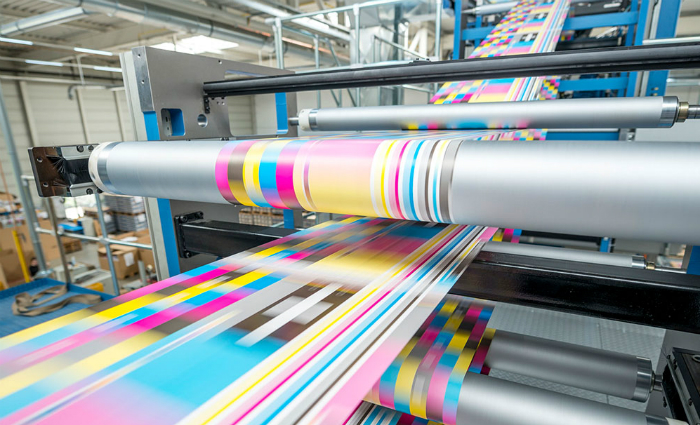Koenig & Bauer reportshas seen its net profit half from the previous 1HY, while the Asia Pacific region grew its share of group revenue.
All regions saw falls in revenue, with the exception of Germany, which the company classifies independently from Europe, and the Asia/Pacific area, which grew its proportion of group revenue, increasing to 27.1 per cent, from 24.6 per cent in the previous year.
Order intake reached €705.3m ($1.24bn), an increase of 17.2 per cent but generating sales fell five per cent. Earnings before interest and taxes came in at €10.6m, falling 35 per cent from €16.3m in the first half of 2017. The net profit of €6.7m marked a fall of 56 per cent from €15.2 in the pcp.
The Australasian division has changed its name from KBA Australasia to Koenig & Bauer (AU).
Dave Lewis, managing director, Koenig & Bauer AU says, “It is a tough industry, but we have a good project and are moving forward. We have bought Flexotecnica, along with Iberica die cutters, and are trying to spread out, mainly in packaging, but in other products as well.”
Its Special segment saw revenue rise to €195m, up three per cent, while ebit came to €14.4m, down two per cent.
Claus Bolza-Schünemann, chief executive of Koenig & Bauer, says, “With order intake reaching a particularly high €454.4m in the second quarter and the order backlog rising to €805.8m at the end of the first half, the Koenig & Bauer Group is on track to meet its targets for 2018. This year, we expect to achieve organic growth of around four per cent in Group revenue and an EBIT margin of around seven per cent.
“Strong security business and more orders in packaging printing caused order intake to rise by 17.2 per cent to €705.3m in the first half of 2018. Driven by the good Q2 figure of €297.1m, Group revenue came to €514.4m, but fell short of the previous year’s figure of €538.9m due to the even greater accumulation of delivery dates in the second half of the year.”
The Sheetfed segment reached a revenue of €283m for the half, down 8.1 per cent. The sector’s EBIT of €7.7m enjoyed a 37 per cent decrease from the year before. Digital & Web revenue declined by 19 per cent to €55.8m, with its ebit coming in at -€9.1m for the half, compared with -€2.8m in the pcp.
Bolza-Schünemann says, “Order intake in our sheetfed segment exactly matched the previous year’s good figure influenced by the Print China fair. Substantial growth was achieved in large-format cardboard printing. As the world market leader in folding carton printing, we are benefiting from heightened capital spending of the international packaging printers. EBIT was down on the previous year due to the delivery related decline in revenue.
“Despite the progress in flexible packaging printing, new orders in Digital & Web were slightly down on the previous year due to fewer orders for newspaper web presses and services. In addition to the growing market-entry costs particularly for corrugated and flexible packaging, EBIT was significantly burdened by lower revenue.This was materially due to the decline in revenue from digital printing presses as a result of subdued demand.
“We are concentrating on digital printing applications for packaging and industrial printing offering our customers a sustained business model for smaller print runs, greater format flexibility and heightened personalisation.
“However, we see significantly greater short and medium-term potential in the large corrugated and foil printing markets, which are expanding at above-average rates. We want to accelerate the pace of growth in analogue direct printing on corrugated board. This also applies to flexible packaging printing following the successful realignment of this business.”
In its outlook, KBA expects organic growth of around four per cent in its Group revenue. Bolza-Schünemann says, “In addition to our printing, finishing, coding and postpress solutions for cardboard, banknotes, cans, glass and hollow containers and other products, we are particularly focusing on corrugated board and flexible packaging. With the focus on the growing packaging printing, we want to boost our revenue and profitability as well as the stability of our business on a sustained basis.”


